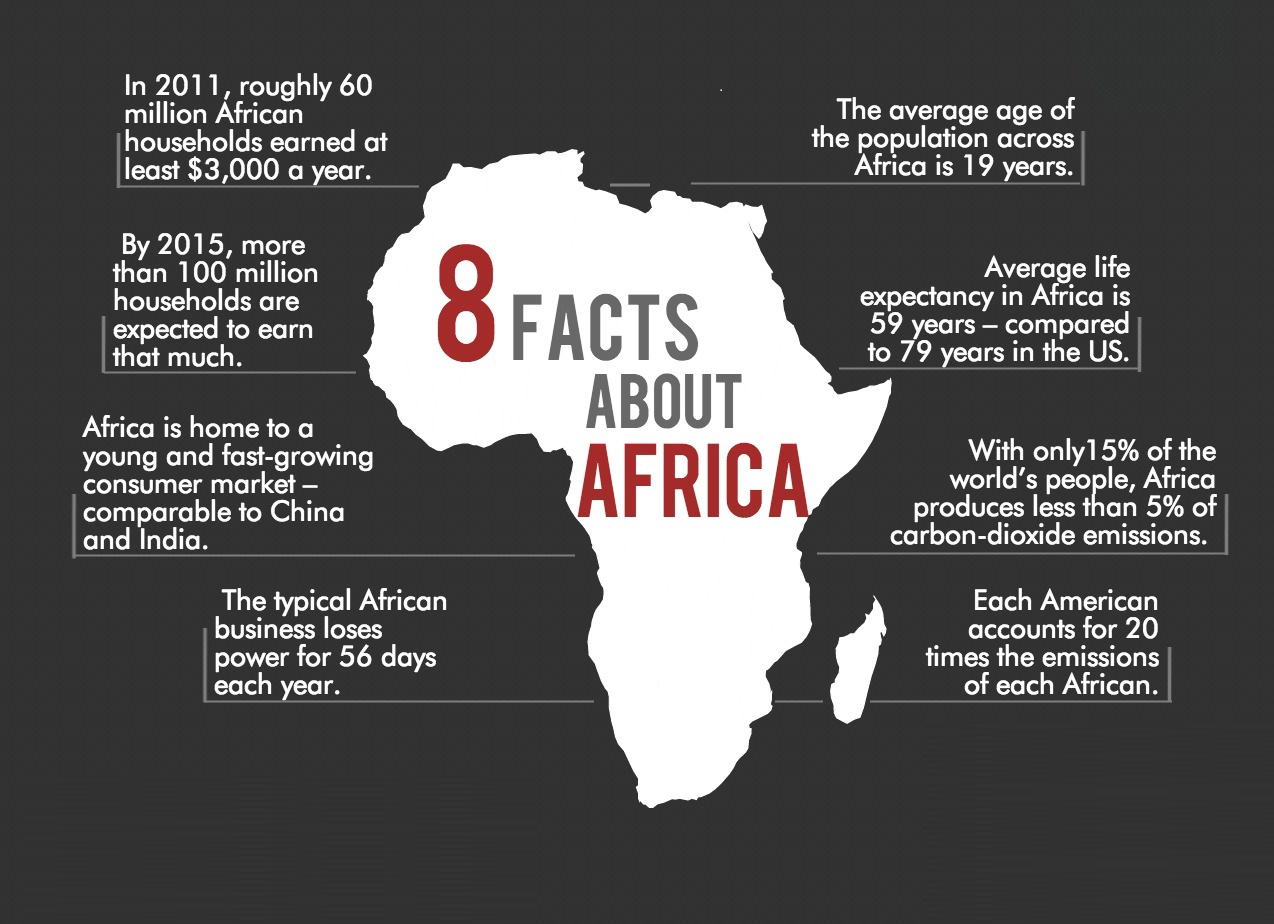- Interesting Africa Facts: The whole human race is from the African origin. The oldest known skeletal found of anatomically modern human beings (or Homo sapiens) have been found at parts of East Africa. Human remains were identified at Omo in Ethiopia that have been dated as 195, 000 yrs. old, the oldest known on the planet.
- Skeletons of pre-humans happen to be found in Africa of which date back between 4 and 5 million years ago. The oldest known ancestral kind of humanity is thought to have been the Australopithecus ramidus, who lived at least 4. 4 million years ago.
- Africans were the very first to organize fishing expeditions (90, 000 years ago). At Katanda, a spot in northeastern Zaïre (now Congo), was recovered a finely wrought combination of harpoon points, all highly polished and barbed. Also uncovered was one tool, equally well crafted, probably thought to be a dagger! The discoveries suggested the existence of an early aquatic or maybe fishing based culture.
- Africans were the very first to engage in exploration before 43, 000 years. In 1964 a hematite mine was present in Swaziland at Bomvu Ridge inside Ngwenya mountain range. Ultimately 300, 000 artifacts were recovered including many stone-made mining tools. Adrian Boshier, among the archaeologists on the site, dated the mine to be 43, 200 yrs. old.
- 25,000 years ago Africans pioneered simple arithmetic. The Ishango bone is a tool handle with notches carved found in the Ishango spot of Zaïre (now known as Congo) near Lake Edward. The bone tool was originally considered to have been over 8, 000 yrs. old, but a more new and recent dating has given dates of 25, 000 yrs. old.
- 12, 000 years ago Africans started grown crops, the first known developments in agriculture. Professor Fred Wendorf found that people in West Egypt Desert cultivated crops such as barley, capers, chick-peas, legumes, lentils, dates and wheat. Their ancient tools have been also recovered. There have been grindstones, milling stones, hide scrapers, cutting blades, engraving burins, and mortars and pestles.

- 9, 000 years the Africans started mummifying their dead. A mummified infant was found beneath the rock shelter of Uan Muhuggiag in south-western Libya. The infant was buried inside fetal position and was mummified with a very sophisticated technique that has to have taken centuries to evolve. The technique predates the first mummies known in Ancient Egypt by at least 1, 000 years. Carbon dating is controversial but the mummy may date by 7438 (±220) BC.
- Africans designed the world’s first colossal sculpture 7, 000 or maybe more years ago. The Great Sphinx of Giza was made in a very weird way. It had the head of a man and also the body of a lion. A crucial and important question lifted by this monument was: How old is this? In October 1991 Professor Robert Schoch, a geologist of the Boston University, demonstrated which the Sphinx was sculpted during the time of 5000 BC and 7000 BC. These are dates that he considered conservative.
- On the 1st of March in 1979, the revolutionary New York Times wrote a article on its front page also on page sixteen that was entitled Nubian Monarchy called the oldest. In this document we were assured that: “Evidence of the most well-known recognizable monarchy in history, preceding the rise with the earliest Egyptian kings of a number of generations, has already been discovered in artifacts by ancient Nubia” (for example the territory of the northern Sudan and the southern portion of modern Egypt.)
- The ancient Egyptians had a similar type of tropically adapted skeletal proportions as modern Black Africans. A 2003 papers appeared in American Diary of Physical Anthropology written by Dr Sonia Zakrzewski named: Variation in Ancient Egyptian Stature and Body Proportions where she states that: “The raw values in Table 6 suggest that Egyptians had the ‘super-Negroid’ body structure described by Robins (1983). Their segments of each limb are longer than in many ‘African’ populations. ”
- The majority of ancient Egyptians had Afro combs. One writer tells us how the Egyptians “made a very striking array of combs in ivory: the contour of these is distinctly African and it is like the combs used to this day by Africans and individuals of African descent.”

- The Funerary Complex inside ancient Egyptian city of Saqqara would be the oldest building that visitors regularly visit today. A great outer wall, now generally in ruins, surrounds the full structure. Through the entrance are some columns, the first stone-built columns proven to historians. The North House has ornamental columns built into these walls that have papyrus-like capitals. Also indoors the complex is the Ceremonial Court, made of limestone blocks which are quarried and then molded in different shapes. In the centre with the complex is the Step Pyramid, from the 90 Egyptian pyramids this is the first one.
- The Great Pyramid of Giza, essentially the most extraordinary building in record, is an amazing 481 feet tall – the same as a 40-storey building. It built out of 2. 3 thousand blocks of limestone and granite, where some of them weighted 100 tons.
Read more about Nile River Facts
- The ancient city of Kahun in Egypt was the world’s first planned city. Rectangular and walled, metropolis was divided into a couple of parts. One part located the wealthier inhabitants – the scribes, officials and foremen. And as you might imagine the other part was for the random people. The streets with the western section in particular, were straight and crossed the other at right angles. The stone gutter, over 50 meters wide, ran down the centre of the streets.
- Egyptian mansions have been discovered in Kahun — each of them has 70 bedrooms, divided into four areas or quarters. There was a master’s quarter, quarters for offices, quarters for ladies and servants, and the last one a quarters for granaries, just about every one of them facing a central patio. The master’s quarters had an open court where it had a stone water tank just for bathing bathing.
- The Labyrinth inside Egyptian city of Hawara having its massive layout, chambers and halls, numerous courtyards, was the largest building in antiquity. Having three thousand rooms, 1, 500 of which were above ground and the other 1, 500 were built underground.
Continue reading the 40 Most interesting African Facts

8 Africa Facts
Amazing information! Always good to learn more about this great and blessed continent.
thank you for the very useful information.
THANKS FOR THE INFORMATION, KEEP UP THE GOOD WORK OF EDUCATING AFRICAN YOUTH
I want to include this website as a credible source for my students to do research on Africa geography, but I won’t be able to. There are no credits, authors, or citations of statistics (who gathered them). In short, there is not way to discern from real facts and ones that were made up. It’s a shame because I love what I have found here.
Don’t think any of you have been there. I have; 23 times. I love Africa& will move there later this year. To Gisenyi, Rwanda. The sixth safest country in Africa, Rwanda has banned plastic bags many years ago.
Thanks for this information
thank you for the very useful information.